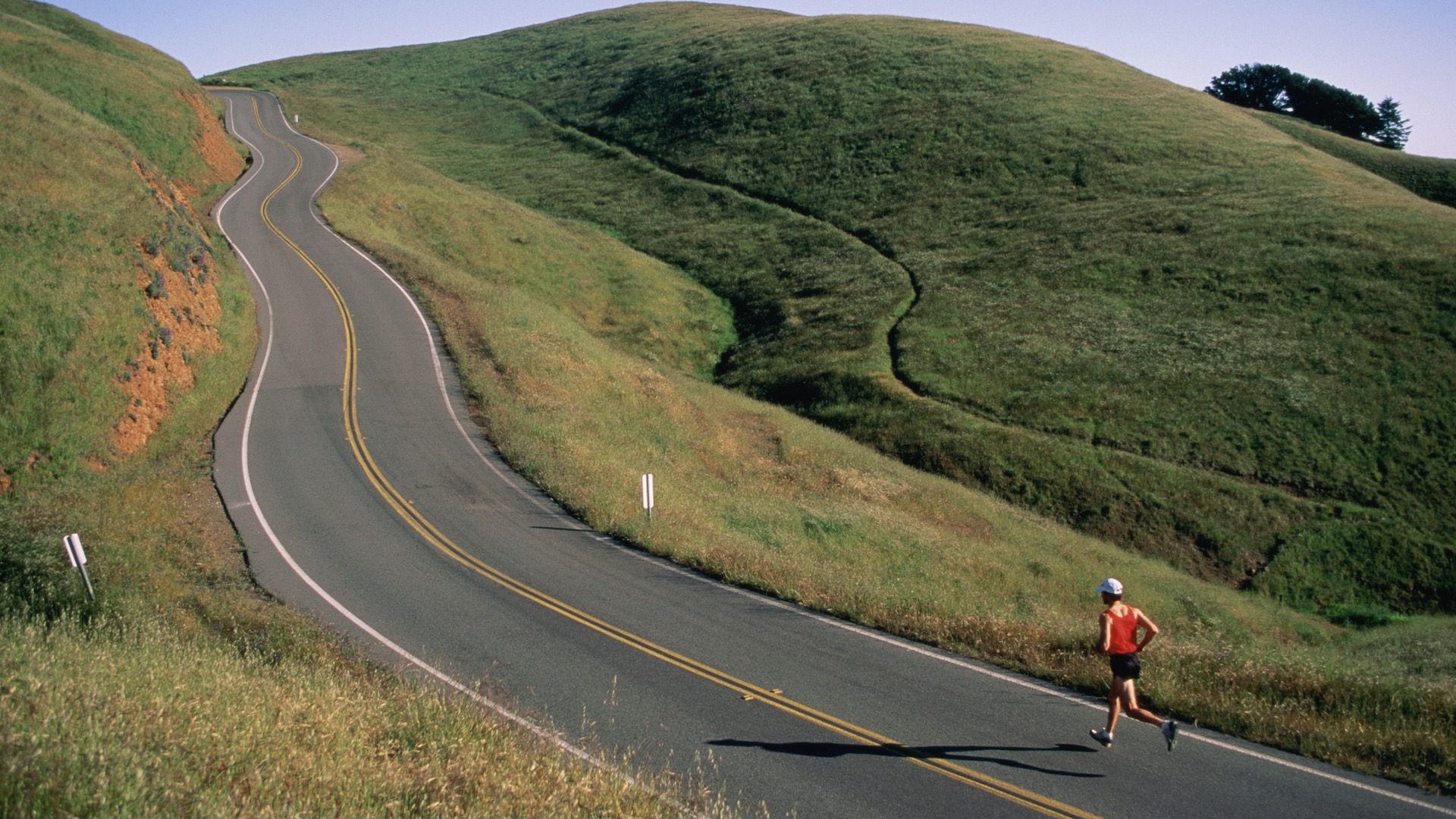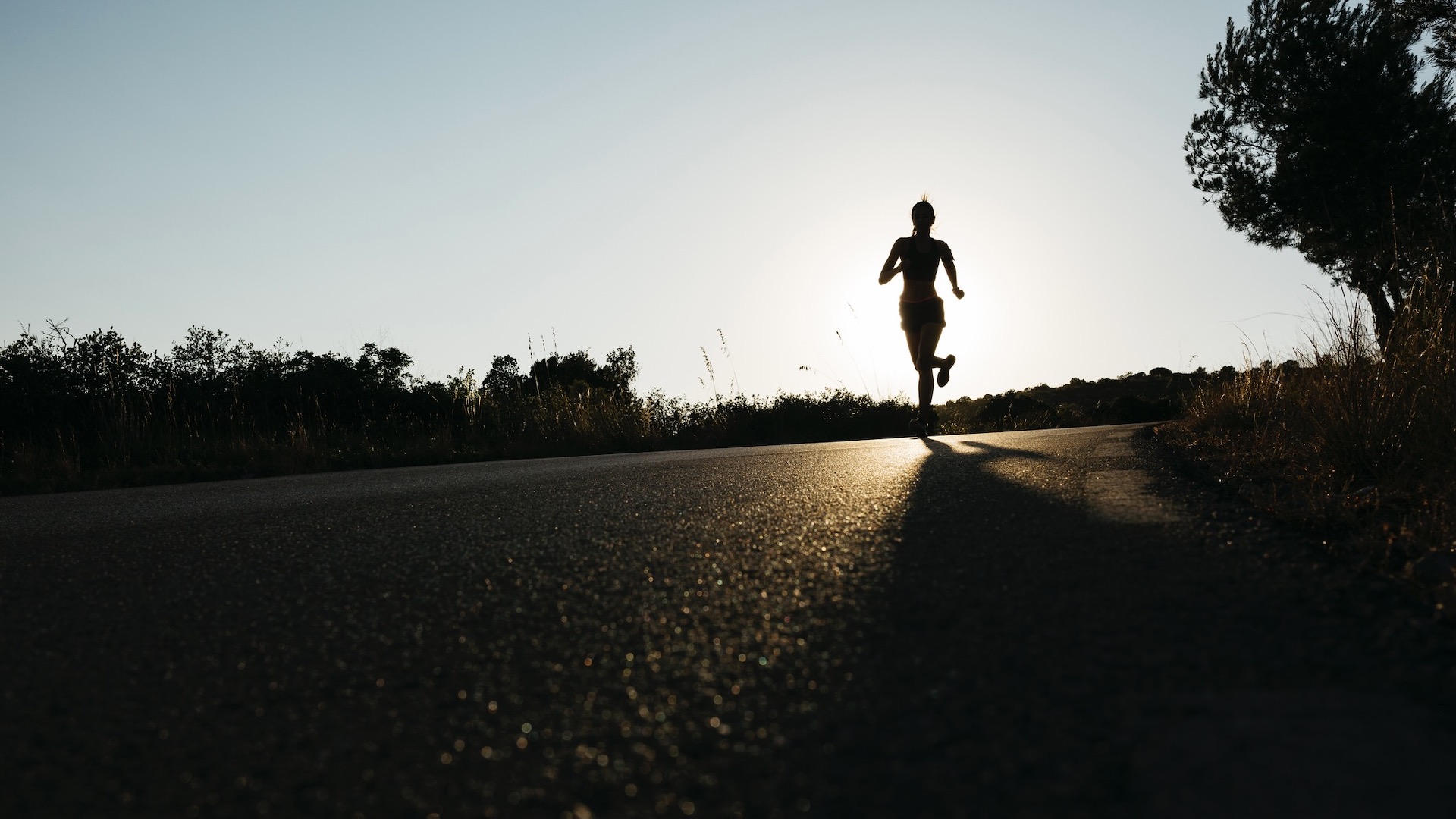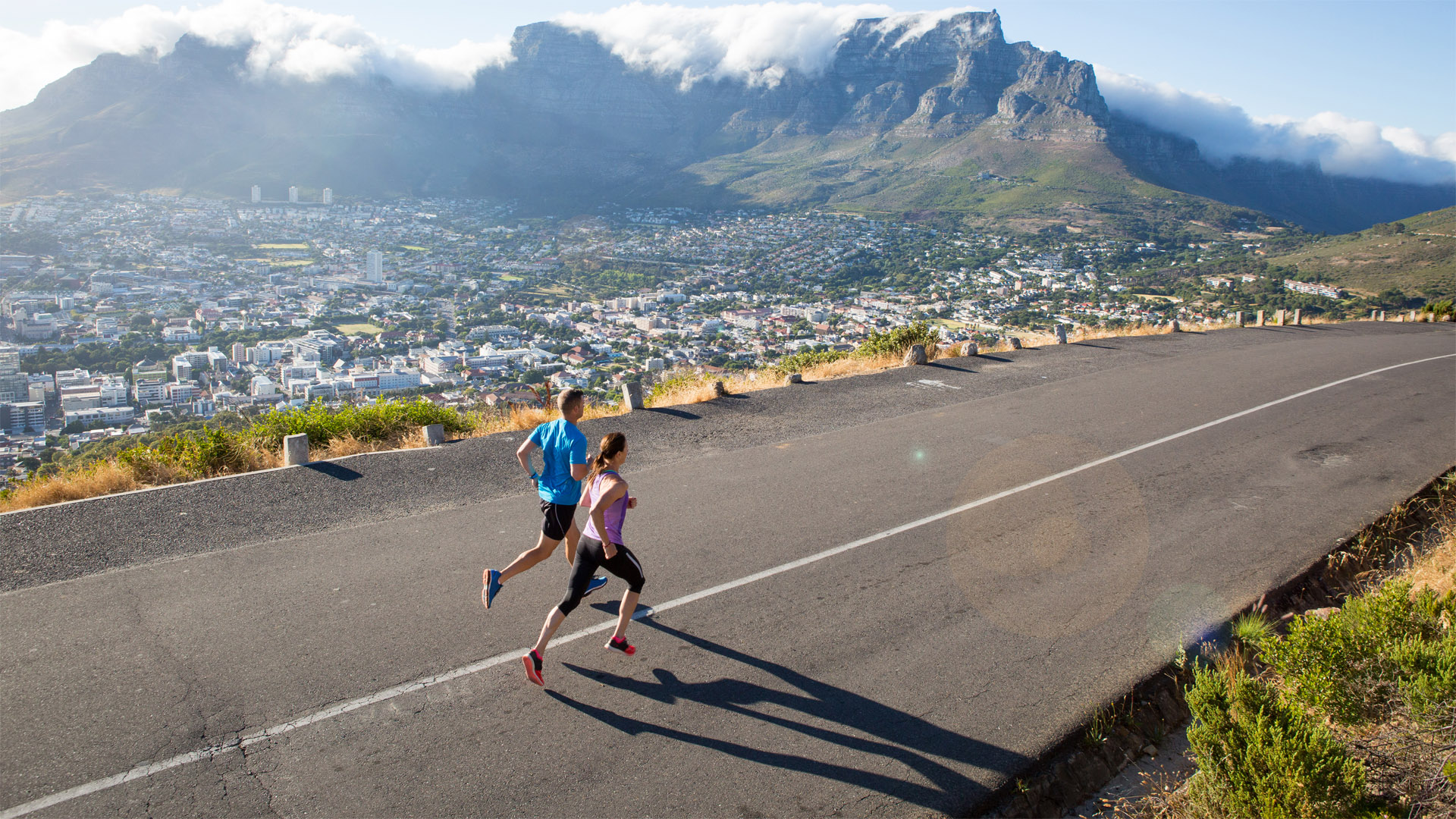9 road running safety tips
Our road running safety tips help you train on the tarmac without running into trouble

Getting outdoors successfully isn’t just about having the best gear and doing all the proper training to crush your goals – you also need to stay safe while you’re doing it to prevent injury and other mishaps and keep you getting out there. Road running has its very own set of guidelines that are very specific to sharing your 'trail' with vehicular traffic, and our road running safety tips help you train on the tarmac without running into trouble.
1. Make yourself visible
The first rule of road running is to make yourself as visible as possible so that drivers can see you. This means no running in your favorite earth-tone or black clothing. Brightly colored running tops like the North Face Flight Series Weightless Tank and reflective details on your clothing and shoes is an absolute must for road running, no matter how you feel about neon. At night and in winter, you should also use a running headlamp.

2. Switch to bone conduction headphones
We know that your run might seem like it depends on your favorite running playlist, and there was a time we’d have said to ditch the headphones altogether so you can hear for cars coming around the bend. These days, however, bone conduction headphones like the Shokz OpenRun Pro allow you to hear ambient sounds while you’re on the road, so we’d recommend looking into getting a pair if you just can’t trot without tunes.
3. Plan your route
It can be nice just to take off and see where the road takes you, but it’s a good idea to be aware of potential trouble spots like blind corners and high glare areas and avoid them, or have a plan for moving aside in advance. It’s also helpful to avoid highly congested areas if you can, though you also may also want to stay clear of extremely isolated areas for safety reasons.

4. Be aware of glare
Speaking of glare, you need to be extra aware that drivers may have difficulty seeing in certain areas where they’re facing into the sunrise or cresting a hill. There may be spots where drivers are temporarily blinded by the glare, so be conscious if you’re running up a hill with a low sun behind you that anyone coming toward you may have very limited visibility.
5. Watch your timing
What time of day you go running might have a lot to do with work, school runs and mealtimes, but where you have the flexibility, avoid peak traffic times like rush hour when there are lots of tired drivers on the road, and late at night when there are more alcohol-impaired drivers around.

6. Face the traffic
Generally speaking, you want to run facing oncoming traffic, even though this can feel counterintuitive. This means you can see oncoming cars and jump aside if needed. Some experts do caution that when you’re coming round a tight bend where cars will be hugging the shoulder, you should switch sides, but you should cross the road carefully and well in advance of the bend if you’re doing so.
All the latest inspiration, tips and guides to help you plan your next Advnture!
7. Don’t play chicken
Whether you feel that drivers are being aggressive or irresponsible or even if you’re in an area where pedestrians should have the right of way, there’s no good reason to barge out on crosswalks or stay on the road just to make a point. Always assume that a driver cannot see you unless they’ve indicated that they have. Wait for them to waive you across or move onto the side of the road to let them pass.

8. Carry your phone
When you’re just running out the front door, it’s nice to be able to leave everything behind and run naked, but it is advisable to carry your phone in case of accidents or emergencies. You can turn off notifications so you’re not tempted to look at every ping and use a thigh pocket in your running leggings or the QuadLock Running Armband to help you carry it comfortably.
9. Tell someone where you are going
As with any outdoor adventure, let someone know where you are going and how long you plan to be so that the alarm can be raised quickly if you don’t return on time.
- Best trail running shoes: footwear for tackling tougher terrain at speed
Julia Clarke is a staff writer for Advnture.com and the author of the book Restorative Yoga for Beginners. She loves to explore mountains on foot, bike, skis and belay and then recover on the the yoga mat. Julia graduated with a degree in journalism in 2004 and spent eight years working as a radio presenter in Kansas City, Vermont, Boston and New York City before discovering the joys of the Rocky Mountains. She then detoured west to Colorado and enjoyed 11 years teaching yoga in Vail before returning to her hometown of Glasgow, Scotland in 2020 to focus on family and writing.

